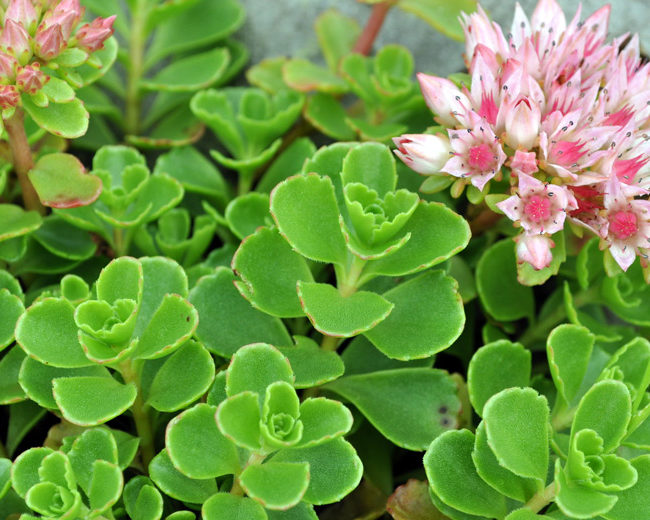Your cart is currently empty!

Sedum Planting Tips

Sedums are a great plant for those hard-to-maintain areas of the garden. They tolerate a wide range of conditions, including poor soil and hot dry weather.
Whether you’re growing tall or creeping varieties, they should be planted in well-drained soil. Heavy, wet soil can cause the crowns and stems to rot.
Location
Sedums are a wonderful plant for anyone who wants to add variety to their garden. They come in a wide range of heights and stunning colors, and they are easy to grow and propagate.
They are also known for their ability to attract pollinators, like bees and butterflies. They are also drought-tolerant and will look good in most climates.
The best location for sedums is a sunny spot with well-drained soil that is slightly alkaline. They do not like a lot of standing water, so you should avoid placing them in areas where they will be subject to water logging.
They thrive in xeriscape gardens, rock gardens, and green roof gardens, as long as they get plenty of light and the soil is well-drained. They are tolerant of most climates, although they may need a bit more water in warmer weather.
Soil
Sedums are pretty drought-resistant thanks to their thick succulent leaves, but they do need a good soil that drains well. Ideally, it should have a slightly alkaline pH.
Soil is a complex mix of air, minerals, water and organisms that provide shelter and support to living things. It also has the ability to hold in moisture, allowing plants to store it for long periods.
It is essential that sedums have a well-draining, slightly alkaline soil, as heavy wet clay is not the best for them. If they are planted in overly wet soil, they can easily suffer from root rot and stem rot.
When planting sedums, dig a hole wider than the pot and just deep enough to make sure the top of the plant’s root ball is level with the surrounding soil. Then place the plant in the hole and fill in around it.
Water
Sedums are drought-tolerant plants that do well with regular watering from spring through fall. Keep in mind that under-watering is a common problem and can cause the foliage to yellow, die, or even rot.
When watering, it is best to use a bottom-up method by pouring the water from a saucer into the pot instead of directly onto the plant’s foliage. This method allows the soil to dry out between hydrations and will help prevent basal rot, which can be an issue when growing in deep shade.
If you have a lot of Sedums that are getting a bit leggy or are not standing upright anymore, pinching them out can encourage bushier growth. You can also cut them back in early summer to reduce their height.
A great way to get more sedums in your garden is by propagating them from stem cuttings or seeds. Whether you are using stem cuttings or seeds, they can be sown in spring or summer in a seed tray or a pot filled with a good potting mix.
Light
Sedums are very versatile plants and can grow well in a variety of spots. They like a lot of bright light, but they can also tolerate low-light conditions in some cases.
When planting sedum seeds, you want to make sure the soil is well-moisturized so that the seedlings can germinate properly. You can use a seed-starting medium with vermiculite or other nutrient-rich materials.
Many sedum varieties produce colorful foliage that ranges from dark and shiny to a multitude of shades in between. Some are more pronounced than others.
In summer and autumn, sedum flowers provide blooms that can last for up to eight weeks. Flowering stems may be removed to tidy up the plant or left to add winter interest and food for bees and butterflies.
Most sedum plants are perennials, which means that they will return year after year to bloom. They will usually enter dormancy in the fall or winter, but some types of stonecrop are tender perennials and can overwinter indoors for an extended bloom season.
by
Tags: